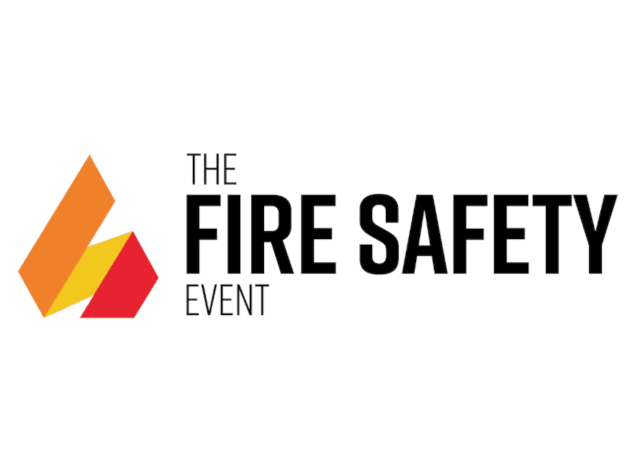Joel Portice, Global CEO of Intermedix, tells International Fire Buyer about the evolution of disaster relief technology
Tell us about Intermedix
Intermedix is a company that serves emergency responders, government agencies and corporations through the best technology solutions available anywhere. It has more than 2,500 employees around the globe and provides services and solutions in more than 25 countries. Its connected technology is a set of solutions and technology-enabled services that connect the healthcare and emergency response and preparedness ecosystem.
The way we define that ecosystem is that it has four components: The first responders, such as the ambulances and the fire departments ; the healthcare providers – hospitals, physicians; the third component being the government agencies who are responsible for managing emergency response and preparedness for their different municipalities and localities; and then the fourth component being the corporations – whether it’s an airline, whether it’s an oil refinery, water treatment facility, who would absolutely be affected potentially by an emergency or disaster, whether it’s manmade or natural. If you think about that entire ecosystem of those four main constituent groups – we’re the only company that has this auto-connected technology that brings all of these things together, in the event of a crisis.
Is technology now becoming more important in disaster management and planning?
Absolutely. Because of the requirement of interoperability – that is the ability to exchange information across multiple agencies so that everyone has visibility into how the crisis is developing and being responded to. That can only be solved through technology.
How important is it for first response technology to be clear and easy to use?
It’s incredibly important. It has to be flexible; it has to be intuitive; it has to be easy to use at the time of the event in order to allow the responders the flexibility in handling the situation. So the ease of use, the customer experience, the user experience, and the intuition is critical.
How have disaster relief techniques changed and improved thanks to technology?
They’ve moved from spreadsheets and whiteboards, to dashboards and other types of information that promote this interoperability, and that ability to exchange information. When it’s on spreadsheets it’s retroactive – whereas with our technologies specifically it is real-time gathering and reporting of incidents and information. This technology is what didn’t exist before and it doesn’t exist for those organisations that are still just using spreadsheets.
A spreadsheet is inherently out of date; it was current the time it was populated, but it is then out-of-date. It is better than not having anything, but technology has advanced so much to the point where spreadsheets should not be the system being used. Unfortunately there are still a number of organisations that still rely on spreadsheet management for these types of [emergency] events.
How important is open and clear communication in fire departments and between other first responders in the wake of a disaster?
It’s critical. It gets back again to this whole theme around interoperability and the ability to exchange information across agencies – whether it’s the ambulances, whether it’s fire departments, they have to be able to communicate information so that it makes the response of those different agencies more effective.
Some fire departments can receive something like 600,000 calls a year and they can use our information in order to respond to the specific event, as well as to communicate to other agencies that would also be responding.
How do you think disaster relief will change in the future, and how will companies like Intermedix help facilitate that change?
There has to be effective communication across the various agencies that are responding to disasters. That communication has not always been good, but it should be. There is a strong push by companies like Intermedix and others in the space to do everything we can to enhance and promote communication across these different agencies.
At Intermedix we have a mission; it is very simple; it’s six words: ‘To serve those who save lives’. Our whole focus is to use our technology, our equipment, our resources, in order to help those responders be there to focus on their mission and keep their focus, by letting us take care of some of the other things behind the scenes. I think that we’ll continue to do that and I think that comes across, not only in better technology, in more precise analysis and information, it comes from doing everything we can to promote and enhance the communication between agencies.
For any of our readers outside of the US, how would you convey to them that this is the right solution?
Right now we’re in more than 25 countries so we’ve already been able to demonstrate the transferability and the usability of our technology. I believe that other organisations will see that the experience we have and the best practices that we have developed will translate to them and improve their ability to respond.
Think about what we’ve been able to accomplish in the U.S. and the transferability of that outside of the US – 47 federal departments in the US use our WebEOC solution to manage their crises. Three branches of the military in the US use WebEOC to manage their crises. WebEOC is installed in scores of military installations around the world through these branches of the military.
600 local and state agencies and municipalities in the US use WebEOC to manage their crises and their events. As well as all the principal airlines, the major oil refineries, the nuclear plants, the big theme parks, anywhere where there can be an emergency or a crisis that could impact a lot of people – these organisations whether public sector or private sector, federal, state, local – are all using WebEOC to manage their crises.
With that kind of traction and being the de facto solution for the US – and FEMA is one of our largest customers – the ability to transfer that experience, and the best practices that we’ve achieved, into other countries and other international agencies is absolutely proven.
What kind of development time is there – if any – for a deployment of the technology to a territory where you may not have the existing language?
The development type depends on the nuances of the country and the area that we’re deploying to, there’s not a standard period of time. Smaller operations can take advantage of our turnkey solution, while more complex systems, such as a private organisation with multiple locations or a federal agency, may need to take extra time with our experts to customise WebEOC to fit their needs. Each case will depend on some of the nuances of that.
What are your plans for the future?
We will continue to innovate and continue advancing the ways in which we serve those who focus on their priorities of saving lives and limiting damage. We are investing in our European base in the UK and with this I will be spending more time myself in Europe, working with our European partners and with my European director, Ian Carr.
We’re a truly international company with a global staff and a global mind-set. We have expertise in EPRR nuances in different countries and different cultures throughout the world. What drives us is being able to help support those who save and improve human lives as well as the environmental infrastructure of our planet. I’m proud we have some of the world’s best tech and analytic innovators working at Intermedix, as well as leaders from an EPRR and first response background, many of who themselves have personal experience of front-line emergency response.
About Intermedix
Intermedix delivers technology-enabled services and SaaS solutions to health care providers, emergency responders, government agencies and corporations. The company supports more than 15,000 health care providers with practice management, revenue cycle management and data analytic tools. Intermedix connects the world’s population with crisis management and emergency preparedness technologies.
About Joel Portice
Joel Portice is the CEO of Intermedix and serves on its Board of Directors. He assumed the role in February 2015.
Joel oversees the strategic direction of the healthcare and emergency management company. As CEO, Joel is responsible for overall strategic direction and operational performance of the company.
Before joining Intermedix, Joel was the President, government division and corporate development and strategy for HMS Holdings. In this position Joel was responsible for the company’s federal and state businesses and its corporate strategy and M&A activities. Prior to HMS, Joel served as the president of Verisk Health, where he drove the integration and explosive growth of the healthcare assets of Verisk Analytics over a five year period.
Joel began his professional career in 1994 as the co-founder of Integrity Plus Services, a health care software and data company that delivered analytical and cost-containment services to the Payer market. The business was acquired by UnitedHealth Group.
Joel also co-founded Enclarity, Inc., a healthcare data analytics and information solutions company that was acquired by LexisNexis. Enclarity was recognised as a Top 100 Company by Red Herring Magazine and received the Healthcare Technology Product of the Year award by Frost and Sullivan in 2007.
Currently, Joel is a board director member of Apixio, Inc. and board director member of Intermedix. He has also served as a member of the Board of Advisors to the Center for Healthcare Management and Policy of the Paul Merage School of Business of the University of California, Irvine.
Joel obtained his Bachelor of Science degree at the University of South Dakota and Master’s degree at Hamline University.
In 2013, Joel earned the Alumni Achievement Award for Professional Achievement from the University of South Dakota, and was named Trustee Emeritus of Hamline University in 2012.
In addition to his professional career, Joel is the author of the novel: Paper Bridges. In his spare time, he enjoys outdoor activities and spending time with his family.
www.intermedix.co.uk
Disaster relief: Serving those who save lives
About Fire Buyer
International Fire Buyer is the leading authority in global passive and active fire content, delivering expert news, in-depth articles, exclusive interviews, and industry insights across print, digital, and event platforms. Published 10 times a year, the magazine is a trusted resource for professionals seeking updates and analysis on the latest developments in the fire sector.
To submit an article, or for sponsorship opportunities, please contact our team below.
Read the Latest Issue
Follow us on X
Follow us on X
Click HereFollow us on LinkedIn
Follow us on LinkedIn
Click HereAdvertise here
Reach decision makers and amplify your marketing





































